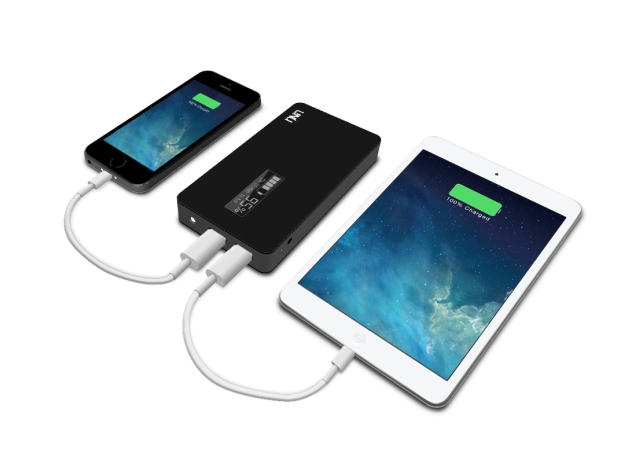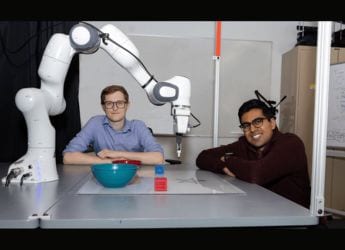- Home
- Science
- Science News
- New Battery Findings May Herald Faster Charging Smartphones
New Battery Findings May Herald Faster Charging Smartphones

In a finding that may help extend smartphone battery life, scientists have found that rapid-charging and draining does not damage the lithium ion battery electrode as previously thought.
A comprehensive look at how tiny particles in a lithium ion battery electrode behave shows that the benefits of slow draining and charging may have been overestimated. The results challenge the prevailing view that "supercharging" batteries is always harder on battery electrodes than charging at slower rates, researchers said.
They also suggest that scientists may be able to modify electrodes or change the way batteries are charged to promote more uniform charging and discharging and extend battery life. One important source of battery wear and tear is the swelling and shrinking of the negative and positive electrodes as they absorb and release ions from the electrolyte during charging and discharging, researchers said.
Scientists looked at a positive electrode made of billions of nanoparticles of lithium iron phosphate. If most or all of these particles actively participate in charging and discharging, they will absorb and release ions more gently and uniformly.
(Also See: 'World's Fastest External Phone Charger' Developed)
But if only a small percentage of particles sop up all the ions, they are more likely to crack and get ruined, degrading the battery's performance. Researchers made small coin cell batteries, charged them with different levels of current for various periods of time, quickly took them apart and rinsed the components to stop the charge/discharge process.
Then they cut the electrode into extremely thin slices and took them to for examination with intense X-rays. "We were able to look at thousands of electrode nanoparticles at a time and get snapshots of them at different stages during charging and discharging," said Stanford University graduate student Yiyang Li, lead author.
"This study is the first to do that comprehensively, under many charging and discharging conditions," said Li. The researchers discovered that only a small percentage of nanoparticles absorbed and released ions during charging, even when it was done very rapidly.
But when the batteries discharged, an interesting thing happened: As the discharge rate increased above a certain threshold, more and more particles started to absorb ions simultaneously, switching to a more uniform and less damaging mode.
This suggests that scientists may be able to tweak the electrode material or the process to get faster rates of charging and discharging while maintaining long battery life.
Get your daily dose of tech news, reviews, and insights, in under 80 characters on Gadgets 360 Turbo. Connect with fellow tech lovers on our Forum. Follow us on X, Facebook, WhatsApp, Threads and Google News for instant updates. Catch all the action on our YouTube channel.
- Samsung Galaxy Unpacked 2025
- ChatGPT
- Redmi Note 14 Pro+
- iPhone 16
- Apple Vision Pro
- Oneplus 12
- OnePlus Nord CE 3 Lite 5G
- iPhone 13
- Xiaomi 14 Pro
- Oppo Find N3
- Tecno Spark Go (2023)
- Realme V30
- Best Phones Under 25000
- Samsung Galaxy S24 Series
- Cryptocurrency
- iQoo 12
- Samsung Galaxy S24 Ultra
- Giottus
- Samsung Galaxy Z Flip 5
- Apple 'Scary Fast'
- Housefull 5
- GoPro Hero 12 Black Review
- Invincible Season 2
- JioGlass
- HD Ready TV
- Laptop Under 50000
- Smartwatch Under 10000
- Latest Mobile Phones
- Compare Phones
- Huawei Nova 15
- Huawei Nova 15 Pro
- Huawei Nova 15 Ultra
- OnePlus 15R
- Realme Narzo 90x 5G
- Realme Narzo 90 5G
- Vivo S50 Pro Mini
- Vivo S50
- Asus ProArt P16
- MacBook Pro 14-inch (M5, 2025)
- Huawei MatePad 11.5 (2026)
- OnePlus Pad Go 2 (5G)
- OnePlus Watch Lite
- Just Corseca Skywatch Pro
- Acerpure Nitro Z Series 100-inch QLED TV
- Samsung 43 Inch LED Ultra HD (4K) Smart TV (UA43UE81AFULXL)
- Asus ROG Ally
- Nintendo Switch Lite
- Haier 1.6 Ton 5 Star Inverter Split AC (HSU19G-MZAID5BN-INV)
- Haier 1.6 Ton 5 Star Inverter Split AC (HSU19G-MZAIM5BN-INV)












